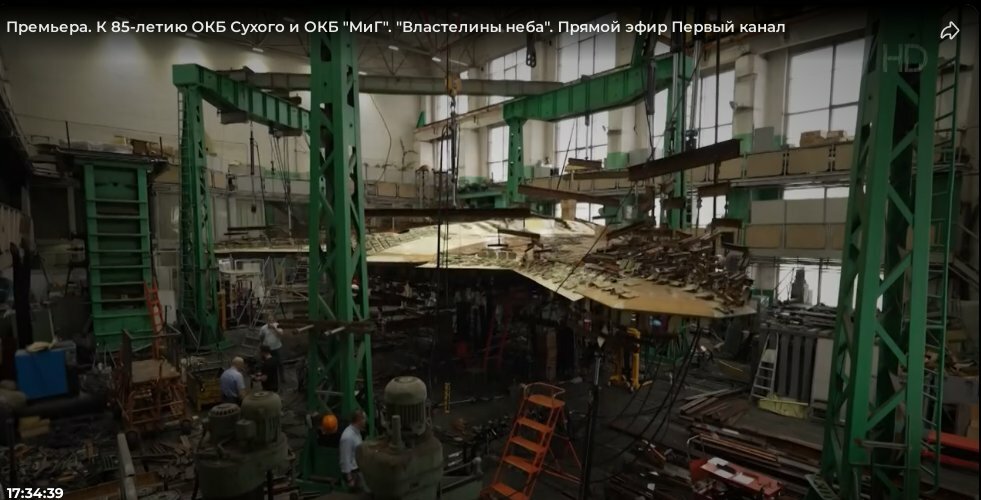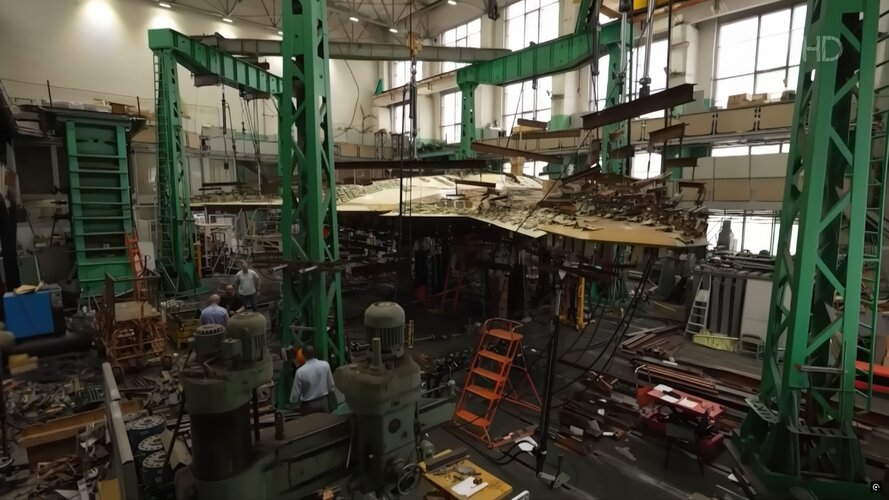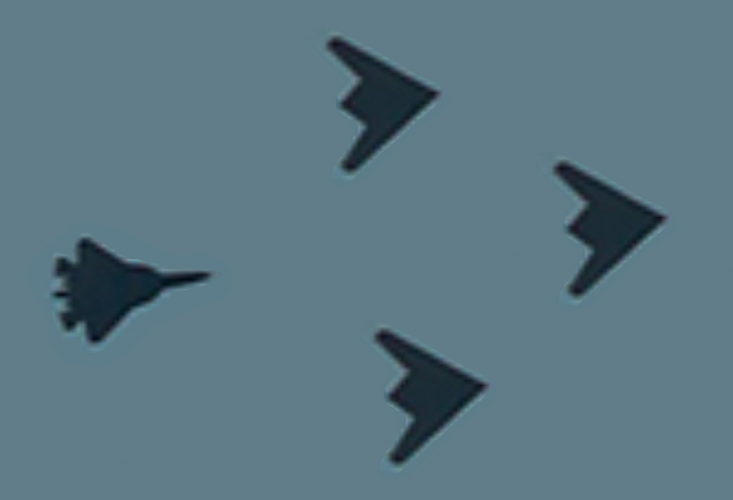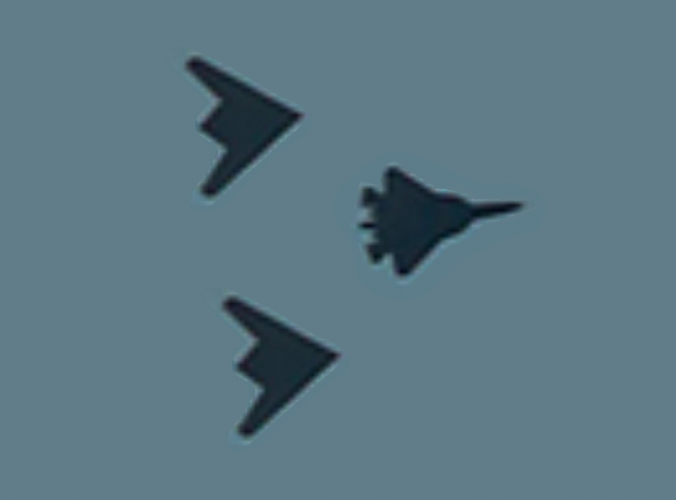Start of work
The subject of a strike remotely piloted aircraft (RPA) was developed in the Sukhoi Design Bureau back in the days of the Soviet Union. In the 70-80s, the Korshun strike RPA project was developed.
In the early 2000s, the Sukhoi Design Bureau continued developing promising unmanned aerial vehicle projects. At that time, UAV projects for reconnaissance missions were being developed: the strategic BAS-62 with the "Rhombus" aerodynamic design (A.Kh. Karimov) and the tactical airborne reconnaissance aircraft "Peregonka-4" (V.V. Soloviev).
From 2002 to the beginning of 2004, the UAV subject matter at the Sukhoi Design Bureau was headed by the director of the BASS program Chief Designer N.N. Dolzhenkov within the framework of the initiatively organized program "Sukhoi Unmanned Aircraft Systems (SUAS). During which design work was carried out in 13 areas of development of UAVs for various purposes.
By the end of 2003, the Sukhoi Design Bureau had focused on three main areas of advanced development, similar in purpose to advanced US developments. As part of the Condor R&D project organized by the VNK VVS, the Sukhoi Design Bureau developed preliminary designs for a functional analogue of the high-altitude reconnaissance UAV Global Hawk (Northrop Grumman, 11 tons) - the K-1 project - and an analogue of the tactical reconnaissance aircraft Predator-V (by General Atomics).
The third direction was the 10-ton class attack UAV - the K-3 project, an analogue of the Boeing X-45B (10 t) attack project. In which it was supposed to use the scientific and technical reserve (NTZ) for the Yak-130 aircraft. In particular - a twinengine power plant based on AI-222-25 engines.
From 2005 to 2010, the duties of the director of the BASS program were performed by the first deputy general director of the Sukhoi Company S.S. Korotkov. With his participation, on the instructions of the general director of the Sukhoi Company M.A. Pogosyan, the task was set to determine the rational direction of further practical work of the enterprise on the subject of UAVs.
Concepts
During this period, within the framework of the BASS program, the head of the work, A.I. Polyakov, proactively organized and carried out (with his direct participation) a set of ideological and conceptual research works to determine the main direction of promising practical work for the Sukhoi Company and the Design Bureau. Research was conducted to determine the rational type, ideology, to develop the concept of creation, target application, role and place in the VKS system, pre-design work was carried out to form the functional and technical appearance of the strike and reconnaissance unmanned complex (URBK).
The work was carried out jointly with key organizations of the Ministry of Defense and Industry: Central Research Institute of the Air Force, VNK GS, VNK BBC, GosNIIAS. During this period, based on the analysis of the most critical components of the prospective aviation grouping of the Aerospace Forces (VKS) of the Russian Federation, the state of the NTZ OKB Sukhoi and the cooperation of the industry involved in the creation of the FA), and also taking into account the capabilities and need to load the serial plants of the Sukhoi Company of the prospective aviation complex of frontline
aviation (PAK FA), it was proposed to choose the direction of creating an unmanned strike and reconnaissance complex (URBK) based on the NTZ and PAK FA technologies, including in the interests of further development of the PAK FA program. An ideology of the creation and combat use of a mixed (manned and unmanned combat aircraft systems) aviation grouping of frontline aviation (SMAG FA) was proposed. To ensure the feasibility of creating a promising URBC, including as part of the SMAG FA, within the given time interval, a concept of a single type of engine was proposed promising park based on the engine for the PAK FA.
Together with the cooperation of research organizations of the Ministry of Defense of the Russian Federation and industry, a concept for the creation and targeted use of the URBC was developed. Which was based on the results of the completed studies (the R&D complex "Zveroboy-30", "Zveroboy-30K") of a rational type promising UAVs, took into account the forecast of scenarios for target use in conditions of probable conflicts of various levels and the prospective dynamics of the reduction of the combat capabilities of the aviation group for the period of 2030-2040.
The concept of the URBC envisaged the performance of tasks in conditions of strong enemy counteraction and probable large losses, unacceptable for manned aircraft.
To ensure flexibility and selectivity of target use, it was envisaged that it would be possible to operate as part of a mixed aviation group, including manned aviation complexes, which were intended to be used as airborne command posts.
During the work, the appearance and experience of work on heavy-class strike UAVs such as the X-45C (Boeing) and X-47B (Northrop Grumman) were deeply studied, theoretical studies were carried out on the development trends of the functional capabilities of these projects, the feasibility of the declared performance characteristics with the implementation of experimental work on thematic tests of these analogues.
During this period, the original concept of operation with long-term storage was defined, basic key critical technologies were defined.
Proposals for organizing large-scale serial production were developed, a production site based on the Novosibirsk Aviation Plant named after V.P. Chkalov (NAZ), ensuring the necessary serial production, was justified.
During the work, the economic feasibility was demonstrated (the economic research was conducted by the head of the Bureau of Economic Analysis and Forecasting A.K. Morozov) of creating the URBC air group as a combat system, which, taking into account the concept of long-term storage, ensured a reduction in costs in life cycle several times, in comparison with manned complexes of similar purpose, due to the absence of the need for real flight time to maintain flight skills. According to calculations, during the period of operation, the resulting savings covered the costs of performing R&D and purchasing the required group of URBCs.
It was possible to find a rational solution for the development paths - in the form of a mixed aviation group (manned and unmanned combat aviation complexes), in which it became economically possible to create a large required number of combat aviation complexes based on the URBK and manned aviation complexes. And the Sukhoi Design Bureau completed a two-stage initiative preliminary design for the URBK.
As a result of the conducted design work complex, possible alternative designs of a wide range were investigated, including even a high-speed supersonic variant. A rational functional and technical appearance of the URBC was formed. The optimal aerodynamic layout of the integrated circuit of a low-observable form was determined, including the completed studies of aerodynamic profiles, the creation of its own unique aerodynamic profiling. The geometry of the integrated low-observable air intake and nozzle was carefully studied in variants and developed. Already at this stage of the program, the main parameters of the future S-70 were practically determined.
In 2006, a scientific and practical conference on promising developments of UAV systems was held at the 30th Central Research Institute of the Air Force under the leadership of the Air Force Commander-in-Chief V.S. Mikhailov. The participants were: A.S. Yakovlev Design Bureau, RSK MiG and Sukhoi Company. The Sukhoi Design Bureau's report was noted by the Commander-in-Chief, especially in terms of the economic efficiency of a mixed aviation group with a rational share of unmanned systems.
In the period 2006-2008, on the initiative of the Sukhoi Design Bureau, the VNK VVS opened the Irkutsk Research and Development Center for the development of a combat unmanned aircraft complex. The proposal of the Sukhoi Design Bureau was accepted as a project for the research and development specifications. The main contractor, also on the proposal of the Sukhoi Design Bureau, was GosNIIAS.
During this work, the Sukhoi Design Bureau, as the main co-executor, presented an initiative preliminary design of the URBC, which was noted as the best in an unofficial competition with the RSC MiG. It was during this period The Sukhoi Design Bureau put forward and GosNIIAS proved, through imitation modeling of combat operations, the ideology of creating a promising mixed aviation group of unmanned and manned combat aviation systems, including with the use of a manned airborne control post (ACP). A significant role in the development of the ideology and concept of the URBK was played by Deputy Chief Designer for the integration of the electronic equipment complex M.L. Tuchinsky. The concept of creating an electronic equipment complex (EEC) for the entire complex with the SK-70 UAV as a single system was proposed, both in the logical (software) formulation and from the point of view of embodiment in hardware in the form of specific hardware components based on the hardware components of the PAK FA KBO.
Research and development department "Art Critic"
In 2010, the ordering department of the UZIP ATiV opened the R&D project "Art Expert" in the direction of the robotic combat aviation complex (RBAK). The Sukhoi Design Bureau presented the URBC project, which was developed in accordance with the technical specifications, as a competitive proposal. This project took first place in the official competition with the RAC "MiG", and the Sukhoi Design Bureau headed this work as the main contractor for the R&D.
During the development of the preliminary design, the Sukhoi Design Bureau proved the viability and efficiency of the single-engine power plant URBC based on the turbojet engine "product 117", taking into account the cost and expected losses in peacetime and wartime. Thus, the concept of a single type of engine in the frontline aviation fleet received practical development for the unmanned direction. heavy class.
Later, taking into account the relevance and specifics of application, the unmanned theme moved from the Air Force to a new customer of the Russian Ministry of Defense - the Directorate of Advanced Research and Special Projects (UPMI and SP).
MLD and S-70B
Based on the results of the "Art Critic" research project, on October 14, 2011, UPMI and SP signed a state contract with the Sukhoi Design Bureau to perform research with an experimental part of the work. During the implementation of the research, a draft design for the SK-70 reconnaissance and strike complex with the S-70 UAV was developed and the following were created: a full-scale static demonstrator of the S-70 UAV and a large-scale flight demonstrator of the SK-70 complex with the S-70, including a NPU demonstrator. Taking into account previous work and the accumulated potential in this area, the Sukhoi Design Bureau was appointed the prime contractor. A.V. Konyukhov, First Deputy General Director for Programs of the Sukhoi Company, was appointed Director of the Program.
In order to ensure cost management of the S-70, starting from the first stages of development, and the feasibility of purchasing the required number of S-70 groupings, the company implemented the "Cost Engineering" approach. At that stage, the main focus was on the cost of the S-70 airframe and chassis. In particular, when choosing the so-called "material appearance" of the S-70, 13 options for materials and technologies for manufacturing the S-70 airframe, several power schemes and schemes for its division were worked out in detail, including taking into account the cost in the series. In terms of technology, a bet was made on a fundamentally new for that time, widely automated technology for manufacturing large-sized power panels using the infusion method. This technology was based on the automated equipment already created by that time and the debugged manufacturing technology. The technology was intended for the production of large series and implied new, more economical technological processes and polymeric materials.
During the research and development work, broad cooperation was involved in the developments, both in terms of conceptual support, system construction of the entire SK-70 complex (S-70 UAV) with the NPU-70 ground control post, and in terms of specific technical solutions, systems and units of its air and ground components, mainly already implemented during the development of the PAK FA.
It is important to note the exploratory work carried out at this time to determine the appearance of the NPU. In the course of these works, various types of control points were investigated, including with verification of real functioning, the groundwork for which could be used for the development of the NPU-70. The following were considered:
products of the Almaz-Antey Concern, CNIRTI, NIIIT, Sistemprom, KB Luch, Aviaavtomatika, Izmeritel, UZGA, OKB Sokol, Kronshtadt.
In the experimental static part of the research work, a full-scale static model of the S-70B-0 was developed and built. The Novosibirsk Aviation Plant (NAZ) named after V.P. Chkalov, previously proposed during the preliminary design, was chosen as the manufacturer.
On the S-70B-0, including to ensure large-scale production, new technologies for the automated production of large-sized power panels made from polymer composite materials using the infusion method were tested.
The static sample was successfully tested and investigated during loading at SibNIA, which proved the correctness of the choice of the structural power scheme and the choice of technology for manufacturing large-sized power panels from PCM.
In the flight part of the R&D, a demonstrator of the unmanned complex was created: a large-scale flight demonstrator (MLD with a weight of about 50 kg, a span of about 3 meters, with a turbojet engine) with a demonstrator of the NPU. The NPU included automated operator control stations with automated and manual control units consisting of: throttle, stick, pedals. The complex with the MLD was successfully tested and confirmed the feasibility of the aerodynamic configuration "Flying wing without empennage". The MLD demonstrated the possibility of direct remote control via a high-speed video channel with manual landing for a backup landing option and fully automatic modes were implemented in flight: autonomous automatic control of the UAV on takeoff, en route and landing.
During the work on the MLD, several stands were created, including a purge model, a static sample for testing for destructive load, a technological sample for testing the infusion process, a stand-module for the automated workplace of the NPU control operator (due to its appearance and purpose, it was jokingly called a "school desk"), a stand for testing and testing the power plant, a pile driver dynamic stand for testing the chassis damper when dropping the MPD in motion.
An equally important part of the work was played by the enterprise from the electronic industry, the Luch Design Bureau (CEO - Chief Designer M.F. Shebakpolsky), whose history included the topic of the Krylo unmanned reconnaissance aircraft and experience in creating complexes with UAVs: Tipchak, Korsar. The Luch Design Bureau took on the entire complex of ground (in a full-scale demonstrator of the NPU) and onboard electronic equipment, including redundant control channels, telemetry and video channels, used, among other things, for backup manual remote control. The specialists of the Luch Design Bureau also played a significant role in conducting flight tests of the MLD.
A special role in the preparation and implementation of the MLD flight was played by the honored test pilot E.I. Frolov, who, both as a creative design engineer and as a highly qualified pilot control operator, ensured the development of remote backup piloting and automatic flight of the MLD with automatic landing approach to an altitude of 17 meters using satellite navigation. At the end of October 2014, in the first test flight of the MLD, E.I. Frolov was the first in Russian aviation practice to The aircraft, designed according to the aerodynamic design of a “flying wing without tail surfaces”, was successfully lifted into the air and landed in the backup manual mode, which brought new knowledge and practical experience to the practice of the aerodynamic school and the school of automatic control systems of the Sukhoi Design Bureau.
On July 23, 2016, in the development of work on the program, the state customer UPMI and SP was A state contract was concluded with the Sukhoi Company as the sole contractor for the implementation of the following research and development work. In this R&D, due to the complexity and responsibility of the upcoming experimental design work, as well as due to insufficient funding at that time, the Russian Ministry of Defense established the need to confirm the feasibility of the program by creating and flight testing a full-scale demonstrator of the SK-70B complex with the S-70B UAV.
S. Yu. Bibikov was appointed as the program director and chief designer. During the R&D work, a full-scale flight demonstrator of the S-70B-1 UAV and a demonstrator of the NPU-70B were created. The demonstrators of the SK-70B complex were created as a basic model of the promising serial appearance of the SK-70 combat unmanned complex. In addition, the static model created in the previous R&D work was additionally equipped with a chassis and further tested for flight performance. The static model received the index S-70B-0.
In order to minimize scientific and technical risks and significantly reduce the terms and cost of work in the S-70B, ready made and time-tested technical solutions and specific units and systems were used. For example, the chassis of the S-70B as a complete automated system, which implemented the control of braking, rotation of the front support, retraction/release of the chassis was successfully used from the Su-57 aircraft. Special attention was paid to the implementation of the communication complex, which was repeatedly reserved. A competition was held in advance among applicants for various ready-made communication channels with experimental tests in flight. Video channels and command and telemetry channels of the Luch, Yurion, Prima enterprises were used on the S-70B, providing reliable backup control in flight, as well as remote taxiing along the airfield. The following were also used: a cruise engine, an information and control system, an integrated control system, electric generators, hydraulic pumps, electro-hydraulic drives of control surfaces and other systems from the Su-57 aircraft. Thus, already at the stage of creating the full-scale demonstrator S-70B, the concept of unification began to be implemented with NTZ for the 5th generation. The experience of the large-scale demonstrator MLD was useful at the stage of creating automatic control algorithms, and first of all, for the implementation of automatic landing. Also useful was the understanding of the features of the automatic takeoff and landing with braking, which was practically studied at the MLD. Particular attention was paid to the reliability of the created control system S-70B-1. Understanding the complexity and duration of the creation and development of fully automatic control with a given reliability, and also based on the positive results of the implementation of manual remote control, previously achieved at the MLD, a decision was made to simultaneously implement two highly reliable methods of controlling the S-70B-1: first of all, manual multichannel remote control as a backup and step-by-step automated/automatic method, which should become the main one for the serial model of the S-70. Such a technical solution, despite the very large workload of the enterprise and co-executors, the extremely limited development time, justified itself. Flaws in control algorithms, system failures - what always happens when performing complex developments of aviation equipment, were successfully countered by reliable manual remote control during the experimental flight work.
The flight model of the full-scale flight demonstrator S-70B-1 was built at the V.P. Chkalov National Aviation Plant in September 2018. On August 3, 2019, E.I. Frolov lifted the S-70B-1 into the air.
In order to speed up the work and reduce technical risks, it was necessary to create a flying laboratory. The flying laboratory was created on the basis of the third prototype of the Su-57. The flying laboratory T-50-3LL was used to test the most critical systems and control modes, primarily "manual" (manual remote control mode via video channel) and automatic landing. The T-50-3LL was used to very carefully test the multi-channel communication system and, in particular, the two-channel video channel. At that time, the video channel signal delay caused major problems due to the large volume of transmitted information.
Initially, manual landing was practiced on a flight test rig. As a result of a large cycle of manual landing practices with different signal durations in the control channel and in the video channel, the maximum permissible landing safety and optimal delays in terms of manual control comfort were established under various external factors. At the next stage, full-scale manual landing practices were performed on the T-50-3LL. In this case, during the landing approach stage, control of the T-50-3LL was transferred from the pilot (piloted by S.L. Bogdan) to the NPU operator (E.I. Frolov) until a safe altitude was reached. They began with the reverse transfer of control to the T-50-3LL pilot up to an altitude of 120 m. As a result, gradually reducing the altitude, control was brought from the NPU until the T-50-3LL touched the runway, and then the T-50-3LL was also taxied from the NPU until it stopped at the parking lot.
The testing of key systems on the T-50-3LL flying laboratory allowed the successful passing of the Methodological Council of Experimental Aviation for the approval of the S-70B-1 for its first flight and ensuring the first and subsequent flights of the S-70B-1. It is interesting to note that when passing the Methodological Council Some of its participants did not immediately believe that a "manual" landing with the delays obtained as a result of the development of the KSS was possible. They were convinced only by the accomplished fact of real "manual" landings of the T-50-3LL with control from the NPU.
Experimental design work on the creation of the SK-70 with the S-70 UAV
Based on the successful completion of the R&D work, on December 25, 2019, the Minister of Defense of the Russian Federation approved the terms of reference for the R&D work, and on December 27, 2019, the Ministry of Defense signed a state contract with the Sukhoi Company to carry out the R&D work to create the SK-70 reconnaissance and strike complex with the S-70 UAV.
During the work, a powerful cooperation was attracted, mainly participating in the Su-57 aircraft program. The Technical Project was developed, the stage of development of working design documentation was completed. Two experimental flight models and a new static one were built. The T-50-3LL and S-70B-1 are used as flying laboratories.











